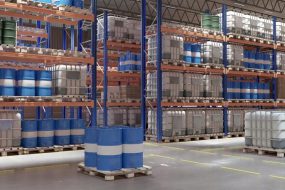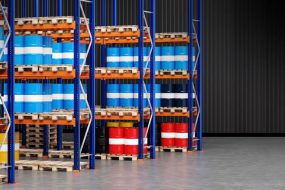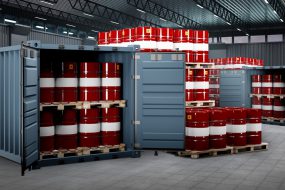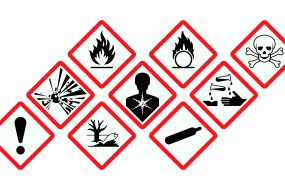We live in a world where you can track your pizza in real time, but when it comes to shipping hazardous cargo? Things have traditionally been slower, clunkier, and, if we’re being honest, a little terrifying.
But that’s changing fast. As cities grow, tech evolves, and global supply chains get more complex, the pressure’s on for businesses to get sharper about risk. Whether it’s flammable liquids, toxic chemicals, or high-risk biologics, the requirements for shipping dangerous goods are stricter than ever, which means that innovation is no longer optional.
Let’s explore how savvy companies are rethinking the way they move hazardous cargo, and what you need to know to stay compliant, efficient, and safe.
Related Reading: 5 Rules for shipping hazardous goods the right way
It’s not just about rules. It’s about readiness.
Yes, the requirements for shipping dangerous goods are set in stone – and they should be. Between the International Maritime Dangerous Goods (IMDG) Code and the Hazardous Materials Regulations (HMR) in the US, there’s a hefty list of what to do, what to avoid, and what to triple-check before anything gets loaded on a truck, plane or boat.
But compliance is more than ticking boxes. It’s about understanding the why and being prepared at every point in the chain. From packaging and documentation to training and emergency response plans, it’s about embedding risk awareness into the everyday.
The tricky bits: What makes hazardous cargo shipping so complex?
Hazardous cargo shipping is a beast with many heads. Here’s what you’re up against:
- Storage nightmares: You can’t stack explosive or corrosive goods next to just anything.
- Transport headaches: Multimodal logistics (that’s when you use trucks, trains, ships and planes) = more moving parts, more room for error.
- Regulatory overload: One tiny mistake on a label, and your shipment could be delayed – or worse, rejected.
- Environmental risk: A single leak could mean contamination, fines, and serious reputational damage.
So, what’s the way forward? Smart tech, smart people, and even smarter systems.
Related Reading: Shipping hazardous goods internationally? Here’s what you must get right
The tech fix: How innovation is changing the game
Here’s the good news – new tech is making dangerous goods shipping safer, smoother, and far more efficient.
- Real-time tracking: With IoT-enabled sensors, you can monitor your cargo’s temperature, movement, and condition 24/7.
- Blockchain for transparency: Want an uneditable log of every step in your shipment’s journey? Blockchain’s got you covered. It boosts trust and keeps regulators happy.
- Predictive analytics: Spot problems before they happen, from weather delays to risks in your supply chain.
One chemical company even built blockchain into their entire logistics system. The result? Fewer compliance issues and instant shipment verification. Slick.
Related Reading: Advanced tracking systems: your solution for safe hazardous materials transport
Going multi-modal? Make it work for you
Mixing transport types isn’t just trendy, it’s essential. Multimodal transport helps you reduce transit times, optimise costs, and improve flexibility.
One international logistics company cut delivery time by 25% just by tweaking its road-rail-sea combo. Plus, having multiple transport options gives you a buffer when routes are disrupted (think strikes, floods, or border hold-ups).
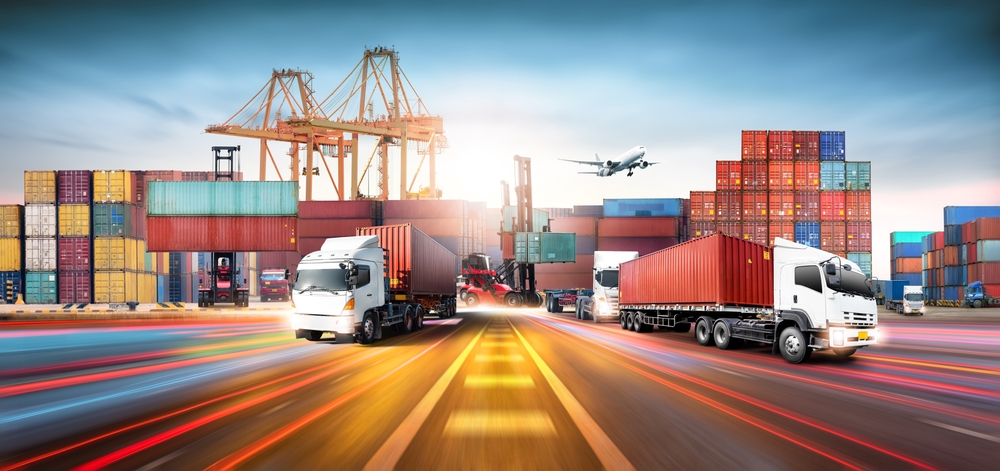

People power: You can’t automate safety culture
Tech can only take you so far. The real magic lies in humans who know their stuff.
Training is non-negotiable. Everyone handling, storing, or transporting dangerous goods needs regular refreshers on safety protocols, emergency procedures, and compliance rules. But beyond that, it’s about building a workplace culture where safety isn’t just policy, it’s personal.
Related Reading: The right way to ship dangerous goods today
Key Takeaway: the road ahead is sustainable, smart, and collaborative
So, what’s next for hazardous shipping?
- Eco-conscious everything: From biodegradable packaging to route optimisation software, sustainability matters more than ever.
- Circular thinking: Reuse, recycle, reduce – that applies to dangerous goods too.
- Stronger partnerships: Collaboration across the supply chain helps spot blind spots and share best practice. Whether it’s data sharing or joint training initiatives, working together pays off.
Dangerous goods shipping doesn’t have to be dangerous. With the right tech, team, and mindset, businesses can stay compliant, keep people safe, and move faster. Rethinking risk isn’t a luxury, it’s a must.
By adopting smarter strategies and the latest tech, you’ll stay ahead in dangerous goods shipping, ensuring compliance, reducing risk, and keeping your operations safe and efficient.
Ready to streamline your hazardous cargo logistics? Explore our specialised chemicals and dangerous goods solutions to see how we can help.

